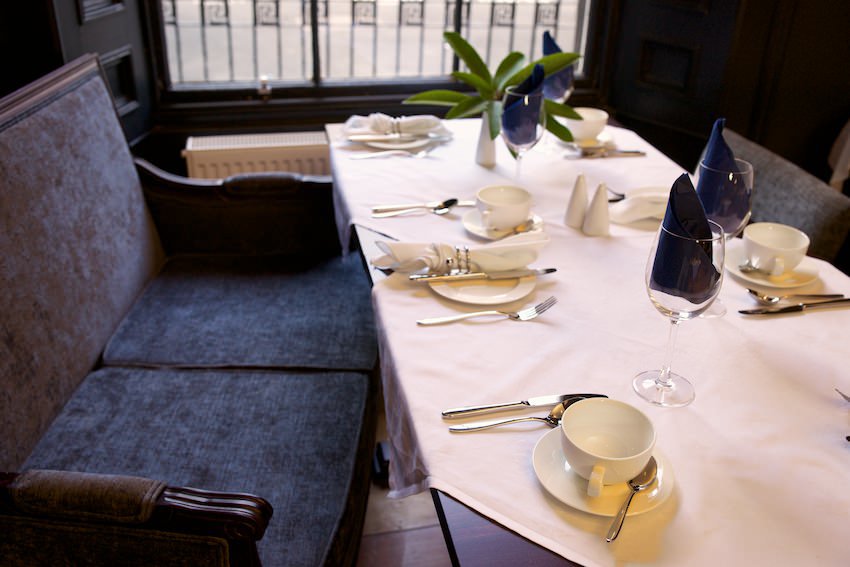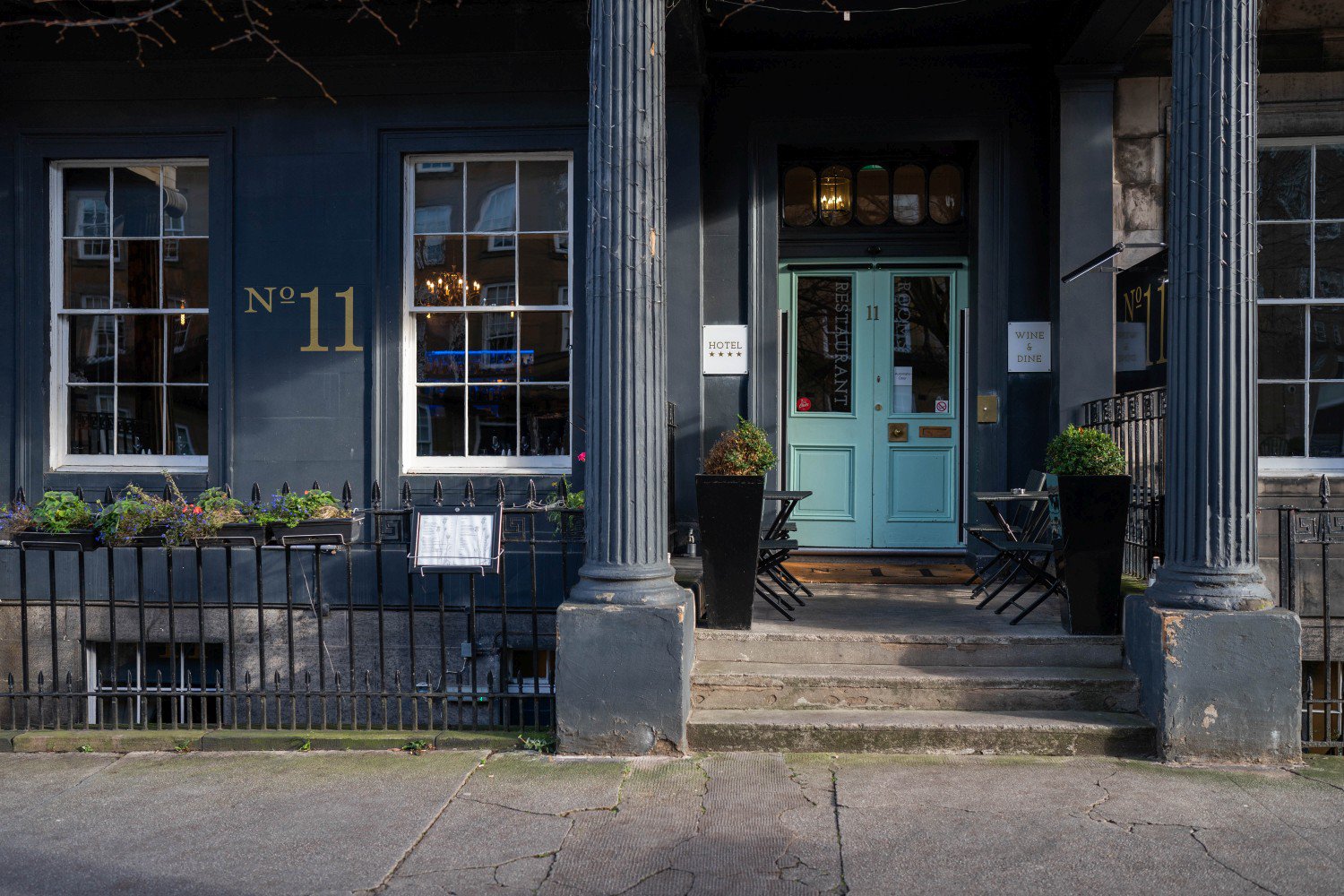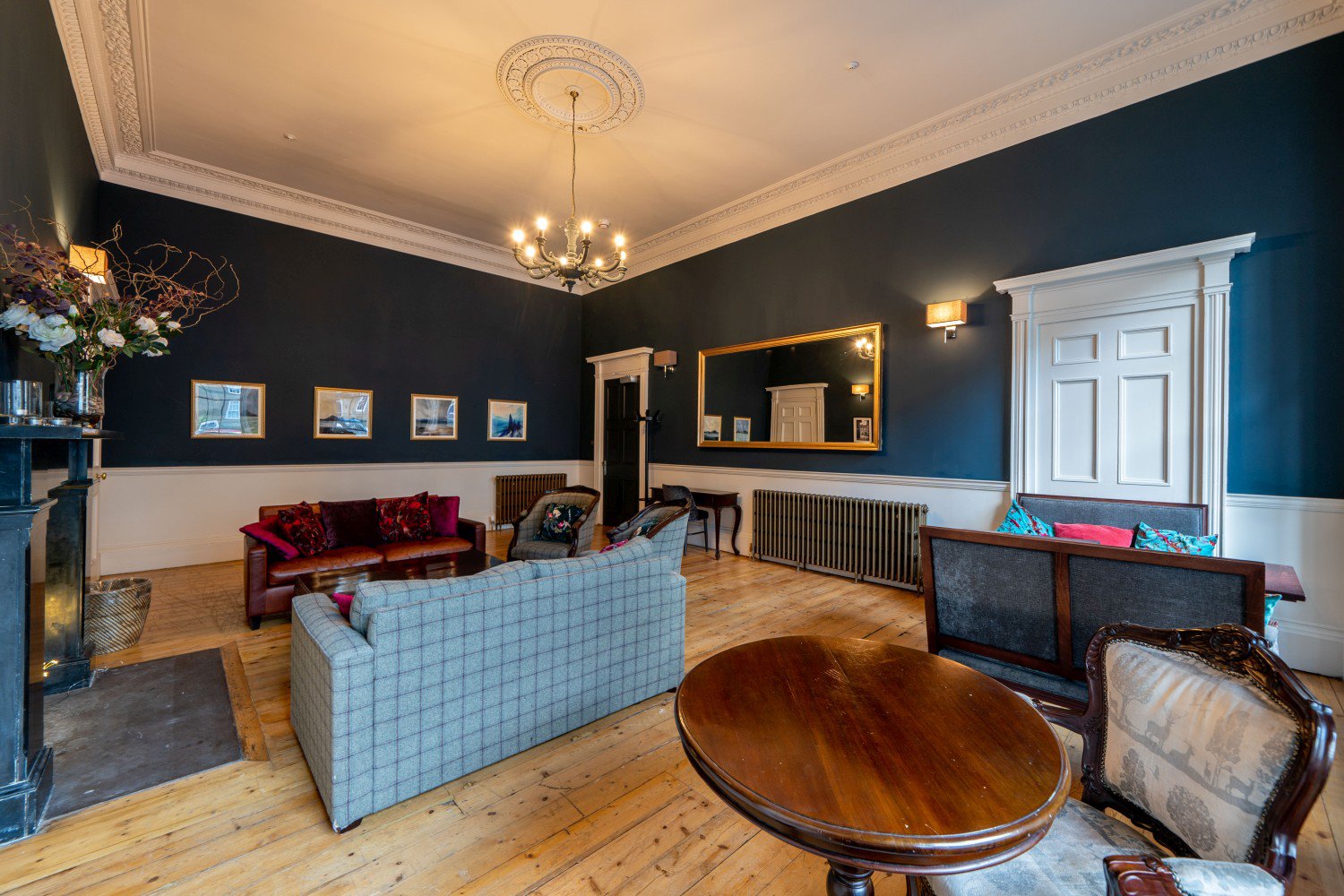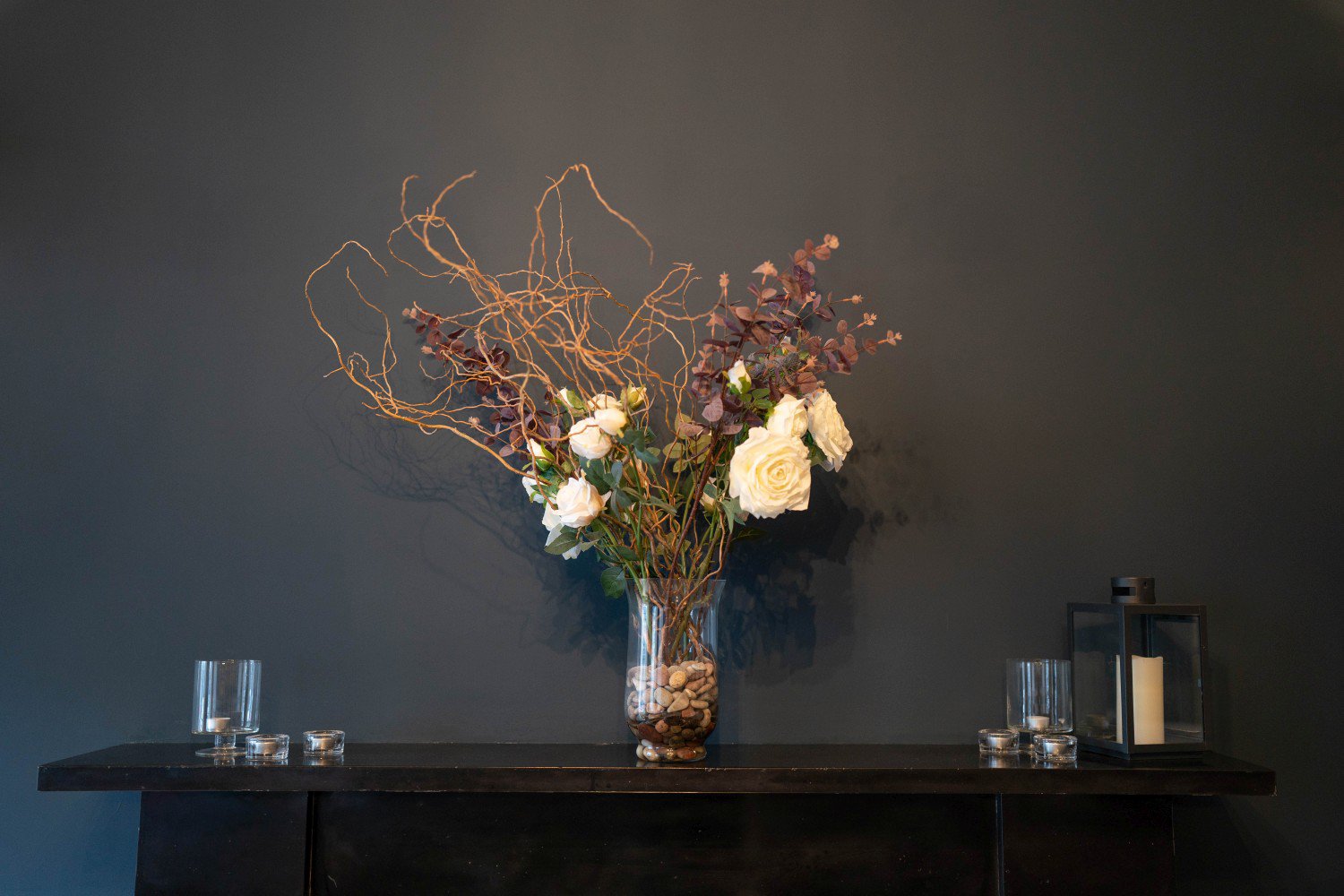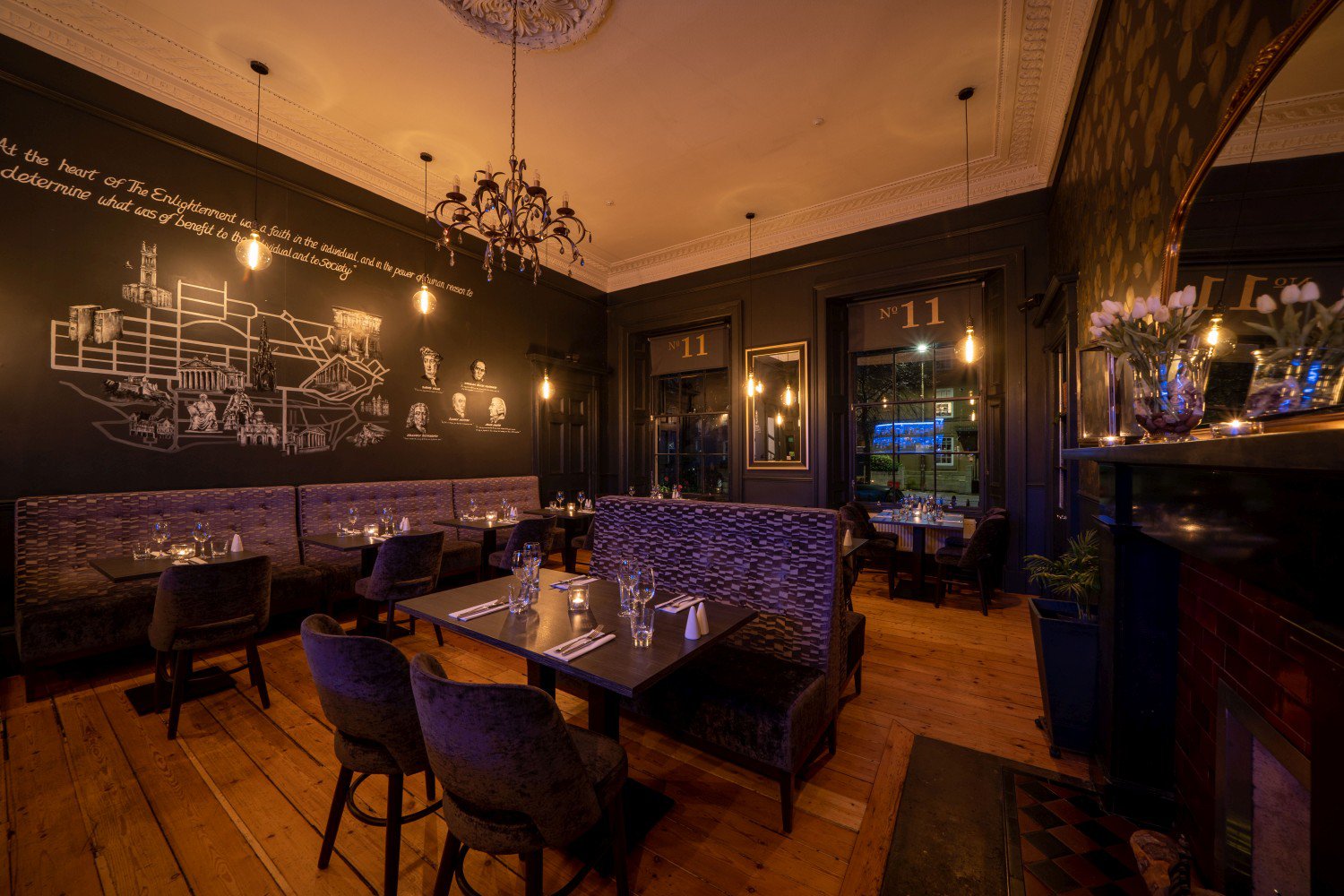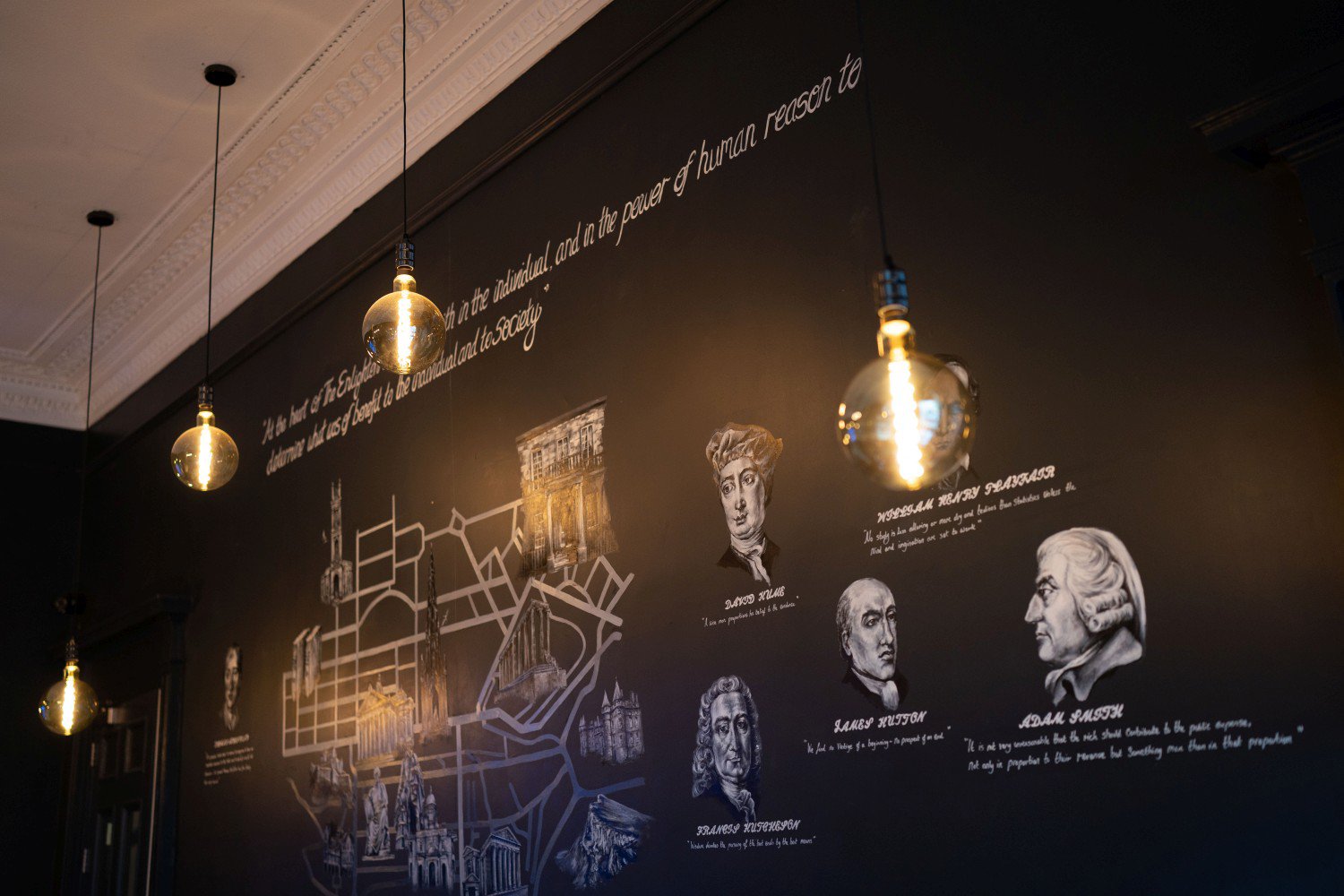History
Commissioned by the renowned Scottish architect William Playfair, No 11 Brunswick Street was completed in 1822. The building highlights some of the finest features of the Georgian era, from the illuminating cupola, ornate cornices and central ceiling roses, to the heavy front Portico flanked by solid stone Doric columns and grand entrance hall. Due to the soaring cost of stone and the quarries becoming exhausted only six of these houses were built and they were to become the last of the Georgian New Town.
The first owner was Lady Francis Erskine, the eldest daughter of the Earl of Mar. Upon her death in 1836 the house changed hands with a succession of ministers of the Church of Scotland living on the premises. In 1930 it was turned into the Black Watch club, for veterans of the oldest kilted regiment of the British Army, dating back to 1725. The extensive damage to the tiles in the entrance hall is believed to have been caused by the habit of soldiers rolling beer barrels in through the main entrance and into the bar.
In 1991 after sixty years as a regimental club, the building was turned into a hotel. The property has been extensively refurbished in 2012 to provide modern hotel facilities, while retaining the original features and character.
Layout
The hotel is a typical example of an Edinburgh, Georgian period town houses, being part of a terrace of matched properties each with their own grand stone portico entrance and spread over four floors. The hotel occupies two connected town houses, each with their own stairwell and connected at the ground floor level. There is no lift or A/C in either building. The ground floor comprises grand entrance and reception, Brasserie, guest lounge, guest toilet and kitchens. Stairs from the hall lead down to the lower ground floor which comprises three bedrooms; a double, an executive double and a mini suite with garden view. There are two public toilets at this level. The discrete private garden is accessed from this level and is available for guest use. Stairs lead up from the entrance hall to the first and second floors. The first floor has one city double room and three Georgian suites. The second floor has one small double room, one double room, two executive doubles one mini-suite and one Georgian suite.
Location
Even though we are in centre of the city, the hotel is located in a quiet street where you can be sure of a good night’s sleep. Brunswick Street is situated just a short stroll from Calton Hill, Princes Street and the Playhouse Theatre Edinburgh. No 11 provides easy access to the cultural, leisure and business locations of central Edinburgh.
From the top of Calton Hill, a ten minute walk, you get a panoramic view up and down the Firth of Forth. The volcanic plug that is the Bass Rock lies to the East, the Forth road and rail bridges to the West, the Fife coast to the North and the Pentland Hills to the South. The Forth rail bridge, completed in 1890 is one of the triumphs of Victorian engineering.
Narrow your view and you find yourself looking out over the City, dominated by the Castle, the Palace of Holyrood and Arthur’s seat (another volcanic plug). The Medieval chaos of the “Old Town” magnificently contrasts with the magnificent splendour of the Georgian “New Town”.









